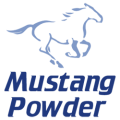Cat Skiing
What is Cat Skiing?
A History and Explanation of the Industry
The concept of cat skiing began over 30 years ago at Selkirk Wilderness, which is located near Meadow Creek, British Columbia, Canada. Brenda and Alan Drury had an epiphany while on a ski holiday and realized that the ski hill grooming machines would make an excellent logistical tool for accessing the backcountry – provided there is a network of snow roads which can be used all winter long. Since then the sport has grown and expanded year after year. In the last 10 years this growth has accelerated, with the capacity increasing three-fold. There are now 19 catskiing destinations in British Columbia, and a handful more in Canada, the USA, New Zealand and Chile – 90% of the industry is situated in BC, Canada.
With improvements in technology, cat skiing now rivals heli skiing in terms of both the quality and quantity of skiing it provides. The Pisten Bully 300/400/600 snowcats, which are becoming standard in the industry, are much better climbers than the old Bombardiers. This means that we are able to get up steeper grades and access much more terrain. Even the rides have become much more enjoyable, as the cats drive much more smoothly and quietly providing an excellent breather between runs.
Cat skiing comes in two forms: day skiing operations – usually located near a town or resort; and remote, multi-day operations based out of a wilderness lodge. A cat skiing or snowboarding holiday begins with a safety talk and avalanche transceiver practice session with the guides. On subsequent days, the skiing begins immediately following breakfast. The first drop-off of the day is usually near the lodge. The guides then work their way to the far parts of the ski area through the morning – and back to the lodge through the afternoon.
At some operations (including Mustang Powder) you can ski right down to the lodge on the last run of the day. In order to maximize the amount of skiing each day, progressive cat operations strive to make their snow road systems as efficient as possible. Rarely does one ski multiple times on the same run – since a ski day with variety is usually the most interesting.
The ski group consists of a lead guide, tailguide, cat driver, and usually 12 or 13 guests. The remote cat skiing lodges usually run 2 or 3 snowcats – so a total of 24 or 36 guests. Some operations have an extra seat in their snowcats, which is used by lodge staff or practicum students (aspiring guides). The weather dictates the type of ski terrain used each day. On clear days you can expect to be up in the alpine, while on snowy and cloudy days you will generally be in the trees and glades. A typical run of 2000 ft. vertical will take about 20 minutes to ascend in the snowcat – and a similar amount of time to descend on skis or boards. Some cat operations stop to have a picnic lunch on the snow, while others have their guests eat lunch during the cat rides.
The passenger cabs on the snowcats are heated, comfortable and fairly quiet. Guests often comment that they really enjoy the social aspect of the snowcat rides. At the top of the ascent everyone disembarks and helps unload the ski gear – so that the cat can leave promptly and be down at the bottom of the run when the skiers arrive. Most operations have a spare snowcat, so in the event of a mechanical breakdown the ski program can continue.
Cat Skiing Terrain
Our terrain at Mustang Powder contains large amounts of both alpine and treed runs. Our longest run is just under 1800 m (6000 ft), and we have many runs over 1000 m (3200 ft). We are constantly exploring new areas, and opening up new terrain by building snow roads. Every summer we do extensive glading to create even more great tree-skiing. If the weather is clear and the visibility is good we are almost always at tree line and above in the alpine. If it is snowing and cloudy we typically drop off at tree line and ski down through old growth Monashee forests. Over a whole season we usually ski half in the alpine and half in the trees. We have lots of north facing terrain, which allows us to ski untracked powder, even during long droughts.
Within our cat skiing tenure, we have a variety of steep and moderate terrain. During a typical day you will likely ski an assortment of runs. First working our way to the far reaches of our tenure, and then working our way back to the lodge again. Rarely do we ski more than a few runs in the same area. We try to organize groups that have similar abilities, but this is not always easy or possible. Groups may be changed after the first day to accommodate various levels of ability. The best way to ensure that you are with a compatible skiers is to organize a full group of 12 or 13 friends.


